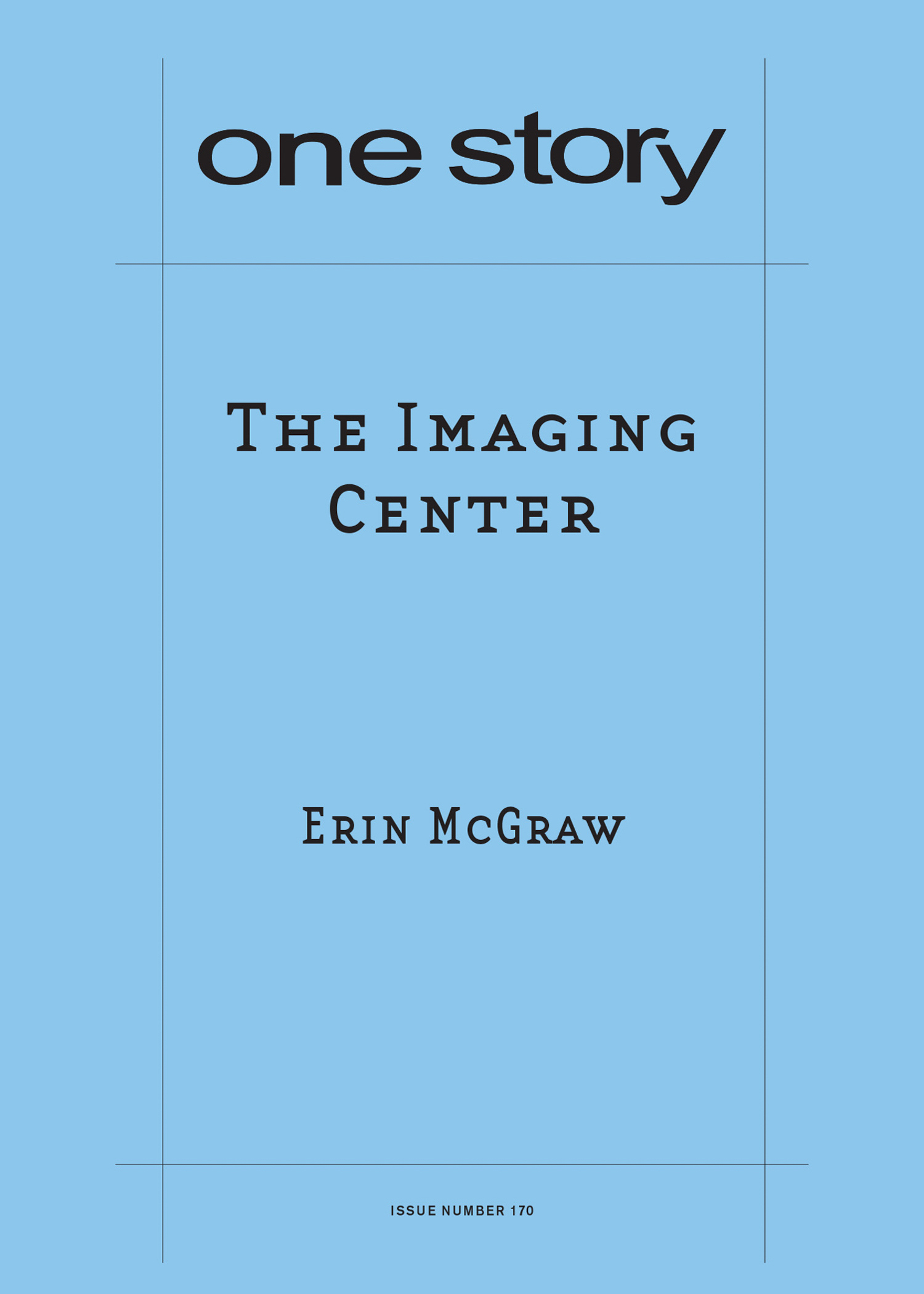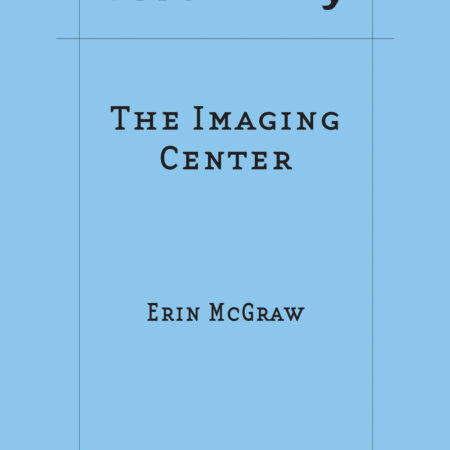
The Imaging Center
$2.50
70 in stock
Excerpt
Love cracked across Pete Wender two days after his forty-seventh birthday, when the medical center where he worked as a technician held its June picnic, an event Pete liked for its ruthless, middle-aged softball and numberless margaritas. At least one person usually brought a dog, and Pete liked that, too. He and his wife, Katherine, lived in an apartment that prohibited pets, so he looked forward to opportunities to take a drag off somebody else’s dog. Katherine’s phrase. No animal lover, Katherine let Pete go to the picnic by himself. No lover of drunk husbands, she hadn’t bothered to get out of bed when Pete came home.
This year it was Chuck Mason who brought the dog, a curly yellow terrier that kept trying to rip its bandanna off. Chuck also brought Marnie, his cousin from Chicago. She had been working as an X-ray tech for close to a year, so she had a right to come to the party, Chuck said. She certainly did, Pete said. Her smile was impish, and she held his gaze for a long moment after Chuck introduced them.
“Chuck thinks he has to save me from the clutches of the big city,” Marnie said.
“Do you feel clutched?” Pete said.
“Not hard enough. Can you speak to someone about this?”
Erin McGraw
Erin McGraw is the author of five books of fiction, most recently The Seamstress of Hollywood Boulevard. Her short fiction and essays have appeared in The Atlantic Monthly, The Kenyon Review, Story, Allure, The Southern Review, Good Housekeeping, and many other journals. The recipient of grants from Stanford University, the McDowell Foundation, and Yaddo, she teaches at the Ohio State University and divides her time between Ohio and Tennessee.
Q&A by Will Allison
- WA: You once told me you had a crush on Peyton Manning. Please discuss the ways in which this crush influenced “The Imaging Center”.
- EM: I’m afraid the system of images relating Katherine to Peyton Manning is only too obvious—her great speed, the accuracy of her passes that is so tragically superior to her receivers’ ability to catch—and the potentially career-changing incident that led to her going to a new team. Also, of course, his leading-man good looks. Honestly, I was afraid I was hitting the reader over the head with this.
- WA: Ha! But seriously, where did the idea for this story come from?
- EM: I was thinking about middle-aged crushes, and how much more devastating they can be than the teenage kind. Not only does the afflicted soul have to cope with all the ups and downs of a crush, but he or she has to be aware of how stupid this whole thing looks. You’re just asking to have people make fun of you. And then there’s the sad issue of a life hanging in the balance. If you’re 15 and you get a crush, about the worst thing that can happen is that you’ll listen to a lot of emo music. If you’re 45, you can wreck some lives.
- WA: What was the most challenging aspect of writing this story?
- EM: Sorting out Marnie, and then, by extension, thinking about the people we instantly take a shine to versus the ones we have made a life with, the ones we know through and through. Pete doesn’t really see Marnie until the end of the story—and neither did I. I was embarrassingly far into this before I realized that one of my central characters was a cardboard cut-out of a personality. Once I thought about who Marnie must be to behave in the way she does, the story got more interesting, and meaner.
- WA: Pete’s workplace plays a major role in “The Imaging Center.” How important are characters’ working lives in your fiction?
- EM: They’re pretty important. Most of us, I think, spend a fair bit of time thinking—griping, whining, fretting—about our work lives. Fiction that ignores the effect of work on a character is fiction, to my way of thinking, that makes itself smaller and less buoyant than it might be. Work is interesting, and it puts useful pressure on us. Maybe we’d like to think about the loved one all day long, but the fact is that we need to get that report out by 5 o’clock. Or that beam installed. The vying, legitimate claims on our attention create genuine tensions in our lives, and it seems to me untruthful to ignore that. Besides, I find that readers like to learn about things, including what it feels like to be an imaging technician. You never know when you’re going to be the one on the gurney, and it’s not a bad thing to bring a little empathy to the people taking care of you.
- WA: Pete’s job (literally, looking inside patients’ bodies) functions as the story’s central metaphor as he and Katherine and Marnie seek to peer into one another’s hearts. Did you conceive of Pete’s job as having metaphorical importance from the start, or did it arise during the writing of the story?
- EM: It definitely arose during the writing of the story. When I started, I was 100 percent about the love triangle and 0 percent about the implications of Pete’s work. I could just as easily have made him a welder, and then heaven only knows where the story would have gone. In this case, for draft after draft, the idea of imaging kept presenting itself, like a minor character who keeps clearing his throat from the wings.
- WA: Are there any autobiographical elements in this story? How important is the autobiographical impulse in your work?
- EM: Generally I start with a situation that interests me—say, a middle-aged man conceiving a quick, hot, unexpected crush on a woman he’s just met—and write my way into it. Eventually the story starts to take on autobiographical echoes because that’s the way my imagination works. I can jump into an unfamiliar situation with both feet, every bit of the story new to me, but before long I’m starting to see the characters and action and evaluate them with my same old familiar brain, making the kinds of connections that somebody like me would make. It’s like Flannery O’Connor recalling how members of her family assessed her fiction: “It’s just how some people would do.” As to autobiographical elements in this particular story, I can assure you that I never conceived a crush on anybody during a company picnic.
- WA: I love the energetic zing of the dialogue in this story. How do you approach the writing of dialogue?
- EM: With all available artillery. Dialogue is probably my favorite thing in fiction, but I find it hard, hard, hard to write. Characters’ conversations get drafted and re-drafted more than any other thing I write. I try to move the story ahead with every line, and to write lines that the reader couldn’t figure out for herself, and still keep it sounding natural, or at least as natural as dialogue in fiction can be. I try to bring the full force of each character’s motivations and desires to whatever is being said, which for me means a lot of rewriting as I think my way into the characters and their values. My beloved teacher John L’Heureux told me that dialogue in fiction should be a prize fight, an image I cherish. In particularly fraught scenes, I actually haul two chairs in front of the computer and shift from one chair to the other as I go from one character to the other. I am aware that this is crazy.
- WA: How long did it take you to complete this story?
- EM: A little over a year. I’d write a few drafts, put it away, write another draft or two, put it away again. Typical, for me.
- WA: What are you working on now?
- EM: Last December I paused in the composition of a new novel to read everything I’d written up to that point, around 325 pages. And I was horrified. It was just terrible—stilted, stiff, stagey. Reading it felt like chewing cardboard. Obviously I had to do something, so I decided I’d write my way into the material from a new angle, and see if I couldn’t find a more interesting, vital current. Three hundred pages later, I now have most of a new book that has almost nothing in common with the first one. They both have scenes set in Amsterdam, though not the same scene. So I guess the answer to your question is, “I am working on a novel.” That’s true, as far as it goes.
- WA: What is the best bit of advice about writing you have ever received?
- EM: Another one from John L’Heureux: “Complicate the motive; simplify the action.” The secret to successful fiction in six words.
